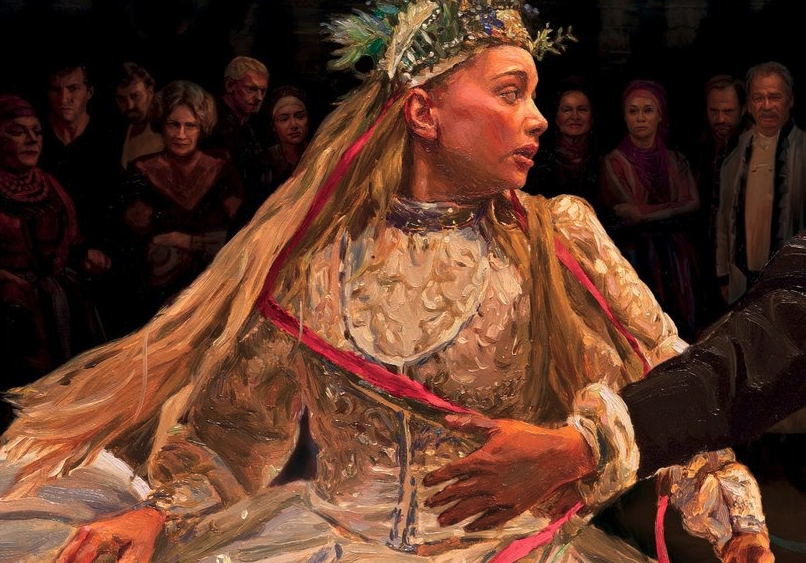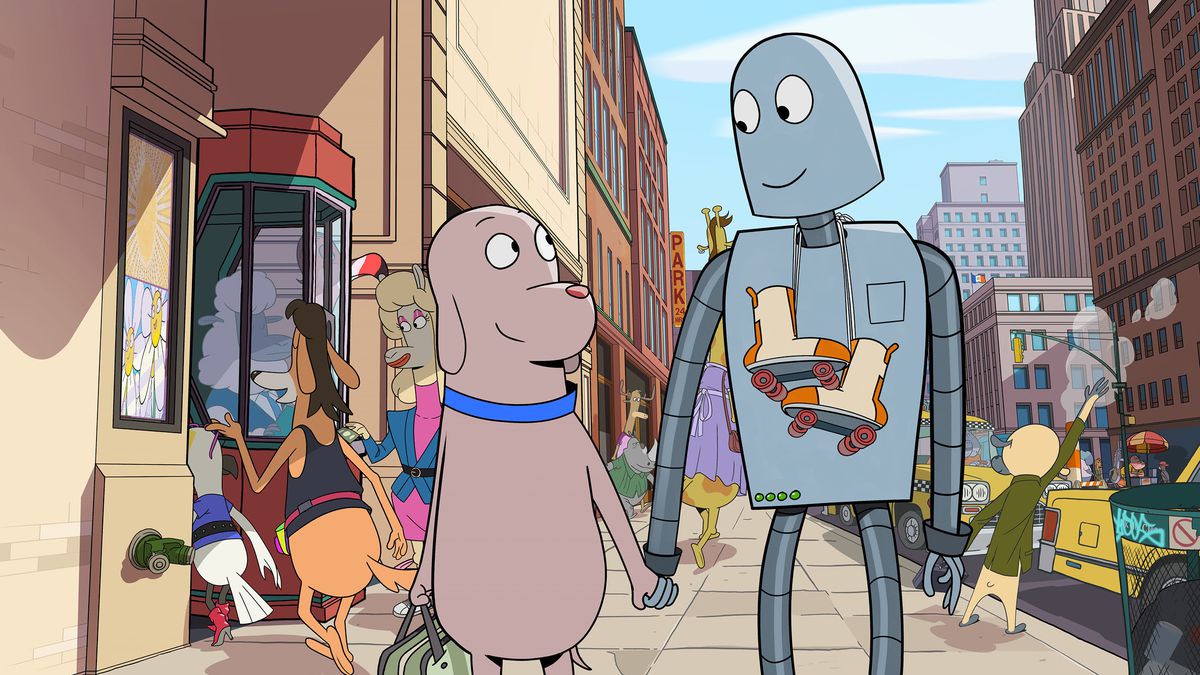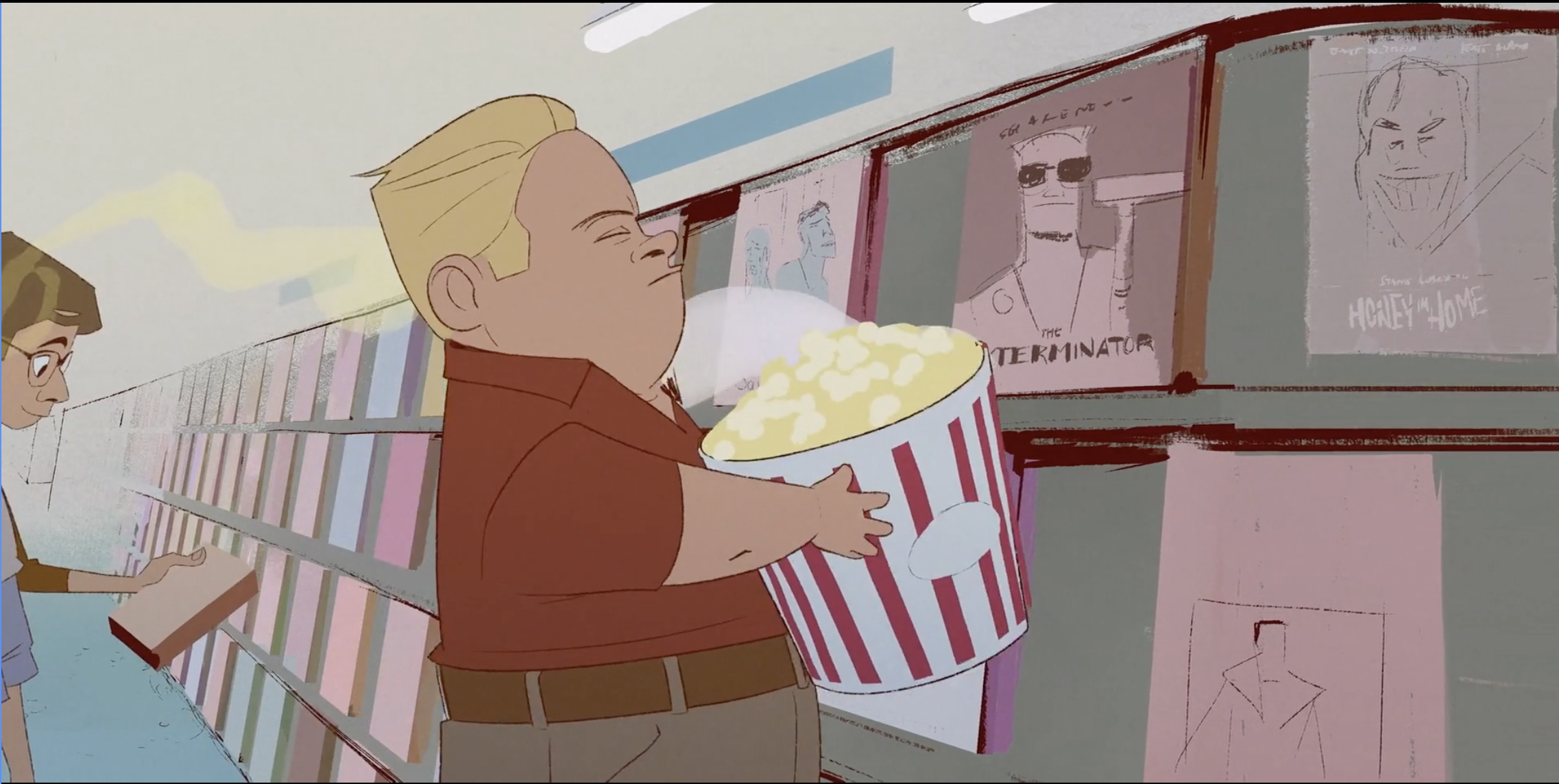
Adapting a four-volume, Nobel Prize winning novel to a movie is no easy task. Choosing to animate it is an even harder task. The fact that directors DK and Hugh Welchman chose to not only film it in live action first but then rotoscope the entire thing with hand painted images is actually not the craziest thing I’ve seen attempted in cinema, because the one thing crazier is that this is the second time they’ve done so. In 2017, the couple released Loving Vincent, a film about Vincent Van Gogh animated over six years entirely in his painting style, for which they were rewarded with an Oscar nomination for Best Animated Feature. Their follow-up, The Peasants, is no mere repeat performance. Their animation style is refined, and the filmmaking even more ambitious, with the kinds of subjects rarely depicted in animated films. After years of work, partially through an ongoing war, one of the biggest cinematic accomplishments I’ve seen in recent memory has been released…but is the movie any good?
It’s the 19th century in the small Polish village of Lipce, where land is status, tradition reigns, gossip can make or break lives and women are expected to become wives (especially if there’s land involved). Jagna, a young woman, is still single, and is in love with Antek, despite the fact that he’s already married. However, her mother marries her off to Maciej Boryna, the village’s richest farmer, a widower, and Antek’s father. Despite the marriage, Jagna and Antek are still in love, and Antek’s wife Hanka isn’t too happy about her husband’s father being married to the woman he’s having an affair with. As the seasons change, the love triangle, local politics, and the unsparing nature of the community all lead to dire consequences for Jagna.

Don’t be surprised if the opening frames of The Peasants cause your jaw to drop. The animation work in this film is easily some of the best I’ve seen in recent memory. With over 80,000 hand-painted images, this is an absolutely gorgeous film from start to finish, made even more impressive by how well the style blends with the live-action source. Some of the staging in this film is absolutely incredible, especially with the accomplishment of the filmmaking. That’s not to say it could’ve entirely been live-action, either, as it has a few moments that take full advantage of the fact that the film is animated and look great within the painterly style. The score and soundtrack are also top-notch and really bring you into the world of the film.
Yet, the animation is both the film’s biggest strength and its biggest weakness. Whenever I hear about a film like this, I always have the same question: Is this a technical achievement or a movie? Loving Vincent’s story didn’t quite live up to what the filmmakers had accomplished, and I’m sorry to say the same is true here. At worst, the animation even distracted me from what was happening. However, it is compelling, and I did get emotionally invested. The performances are excellent, too, especially Kamila Urzedowska, who does a great job as Jagna. I’ve seen a lot of dramas like this before, though.

I’d say that were this done in live-action, I’d probably think this was decent, but hardly award-worthy. It’s only due to the stylistic choices that it becomes truly great. It’s also a brutal, often downbeat film, especially the disturbing climax. However, it still manages to end on a note of hope and beauty. While I wish the story stood out more, this is still a must-see film for animation fans, and worth checking out just for what’s been accomplished alone. It’s an utterly beautiful and devastating film that deserves to be seen. I just hope if the directors are crazy enough to do a film like this a third time that they finally tell a story worthy of their craft.




Leave A Reply